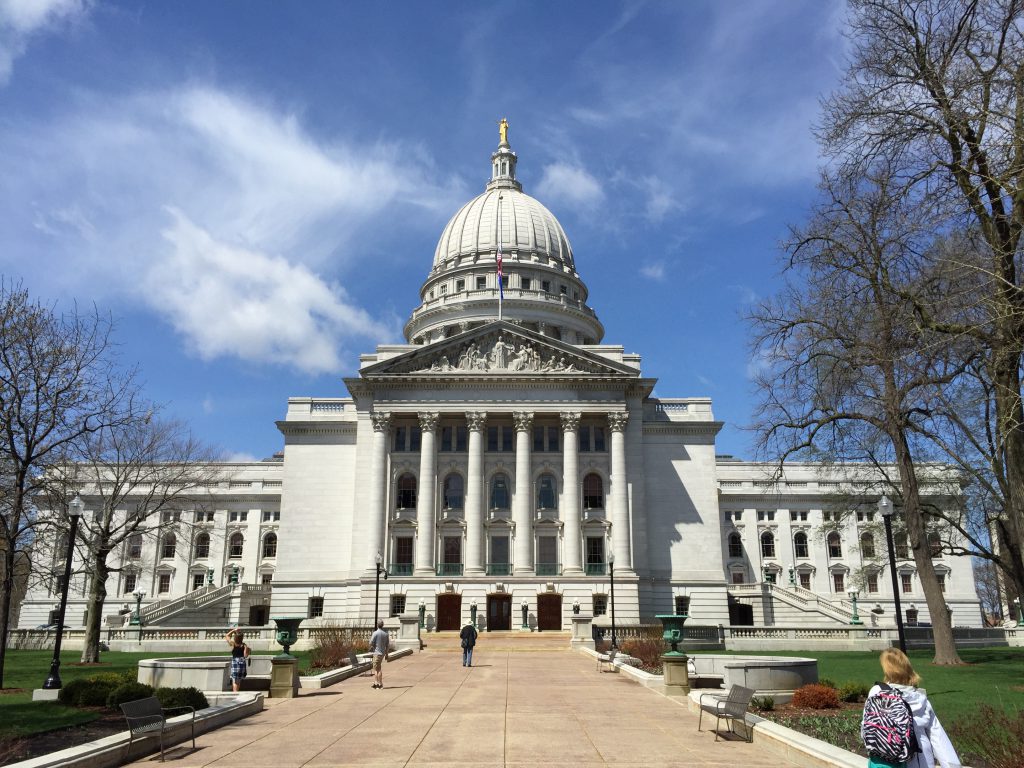Redistricting Begins With Arrival of Census Data
The partisan battle over the next decade's state legislative districts has begun.
The partisan battle over Wisconsin’s next round of redistricting officially began on Thursday with the release of 2020 U.S. Census data to states.
Though high-level numbers were released in April, the data released Thursday includes the numbers necessary for local and state governments to begin drawing the next set of government district maps across the Wisconsin. Local governments will be in charge of maps for city and county government, while state lawmakers will draw new district lines for the state’s 99 Assembly seats, 33 Senate seats and eight congressional districts. The maps will be in effect for 10 years after they are drawn.
On Thursday, Assembly Speaker Robin Vos, R-Rochester, released a statement saying he believes the governor will approve the GOP-drawn maps.
“Soon we will begin the robust map drawing process and I’m confident we will draw a map that the governor will sign,” Vos said.
Vos also announced a public website where Wisconsin residents can submit their proposals for district maps, with a deadline of Oct. 15.
Sachin Chheda, director of statewide advocacy group Fair Elections Project, argued Vos opening the process to public input acknowledges a mistake made during the 2011 redistricting process.
“For years, the people of Wisconsin have been demanding transparency and public input into this process, and now even Speaker Vos recognizes how his maps will be seen as illegitimate if he didn’t at least nod to our concerns,” Chheda said via email.
The redistricting commission created by Evers is also accepting maps drawn by the public.
Republicans have already secured private law firms to work on the next set of maps as well. In April, a circuit court judge voided contracts GOP lawmakers reached with two firms, ruling the Legislature can’t hire its own attorneys for mapmaking until there’s a lawsuit pending over the maps. But the state Supreme Court stayed that ruling in July, pending an appeal from Republicans, thereby allowing Republicans to move forward with the private contracts.
The last time maps were drawn under politically-divided state government, in 2001, the maps ended up going before a federal court appellate court, which re-drew some districts after a long legal battle between Republicans and Democrats.
Lawsuits over the 2020 maps are likely in both state and federal court. In May, the state Supreme Court rejected an effort by Republicans to automatically forward all state-level redistricting lawsuits to the court, bypassing state circuit and appellate courts. However, any state-level lawsuit would likely still end up before the state’s highest court eventually.
Federal lawsuits would begin in district court and could make their way all the way to the U.S. Supreme Court. A federal lawsuit related to Wisconsin’s last set of maps made it all the way to the U.S. Supreme Court, but was dismissed after a ruling in a similar case.
In April, the first round of 2020 Census numbers released showed Wisconsin’s population has remained mostly steady over the past 10 years, with just a four percent increase. Because of that negligible change, the state will retain the same number of representatives in the U.S. House of Representatives.
Redistricting Battle Officially Begins In Wisconsin With Release Of Census Data was originally published by Wisconsin Public Radio.
More about the Gerrymandering of Legislative Districts
- Without Gerrymander, Democrats Flip 14 Legislative Seats - Jack Kelly, Hallie Claflin and Matthew DeFour - Nov 8th, 2024
- Op Ed: Democrats Optimistic About New Voting Maps - Ruth Conniff - Feb 27th, 2024
- The State of Politics: Parties Seek New Candidates in New Districts - Steven Walters - Feb 26th, 2024
- Rep. Myers Issues Statement Regarding Fair Legislative Maps - State Rep. LaKeshia Myers - Feb 19th, 2024
- Statement on Legislative Maps Being Signed into Law - Wisconsin Assembly Speaker Robin Vos - Feb 19th, 2024
- Pocan Reacts to Newly Signed Wisconsin Legislative Maps - U.S. Rep. Mark Pocan - Feb 19th, 2024
- Evers Signs Legislative Maps Into Law, Ending Court Fight - Rich Kremer - Feb 19th, 2024
- Senator Hesselbein Statement: After More than a Decade of Political Gerrymanders, Fair Maps are Signed into Law in Wisconsin - State Senate Democratic Leader Dianne Hesselbein - Feb 19th, 2024
- Wisconsin Democrats on Enactment of New Legislative Maps - Democratic Party of Wisconsin - Feb 19th, 2024
- Governor Evers Signs New Legislative Maps to Replace Unconstitutional GOP Maps - A Better Wisconsin Together - Feb 19th, 2024
Read more about Gerrymandering of Legislative Districts here






















